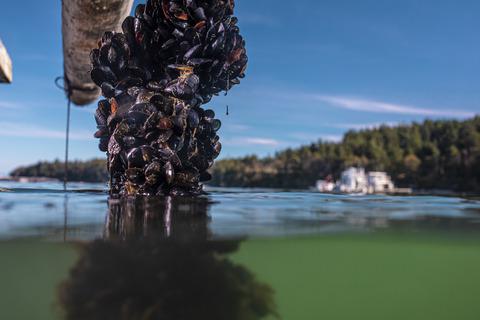当前位置:
X-MOL 学术
›
Funct. Ecol.
›
论文详情
Our official English website, www.x-mol.net, welcomes your
feedback! (Note: you will need to create a separate account there.)
Resource allocation to a structural biomaterial: Induced production of byssal threads decreases growth of a marine mussel
Functional Ecology ( IF 4.6 ) Pub Date : 2021-03-10 , DOI: 10.1111/1365-2435.13788 Emily A. Roberts 1, 2 , Laura A. Newcomb 1, 2 , Michelle M. McCartha 2 , Katie J. Harrington 2 , Sam A. LaFramboise 2 , Emily Carrington 1, 2 , Kenneth P. Sebens 1, 2, 3
中文翻译:

结构生物材料的资源分配:诱导产生的底线会降低海洋贻贝的生长
更新日期:2021-03-10
Functional Ecology ( IF 4.6 ) Pub Date : 2021-03-10 , DOI: 10.1111/1365-2435.13788 Emily A. Roberts 1, 2 , Laura A. Newcomb 1, 2 , Michelle M. McCartha 2 , Katie J. Harrington 2 , Sam A. LaFramboise 2 , Emily Carrington 1, 2 , Kenneth P. Sebens 1, 2, 3
Affiliation

|
- The biomechanics of specialized mechanical structures produced by organisms provides crucial fitness advantages. The energetic cost associated with producing these structural materials and the resulting energetic trade-off with growth, however, is rarely quantified. We integrate resource allocation to structural material production with an energetic framework by combining an experimental manipulation with an energetic model.
- Mytilid bivalves produce byssus, a network of collagen-like threads that tethers individuals to hard substrate. We hypothesized that a manipulation that induces the production of more byssal threads would result in increased energetic cost and decreased growth of the species Mytilus trossulus.
- In month-long field experiments in spring and autumn, we severed byssal threads across a range of frequencies (never, weekly, daily), and measured shell and tissue growth. We then quantified the costs associated with the production of byssal threads using a Scope for Growth model.
- We found that byssal thread removal increased byssal thread production and decreased growth. The cost calculated per byssal thread was similar in the spring and autumn (~1 J/thread), but energy budget calculations differed by season, and depended on thread quantity and seasonal differences in assumptions of metabolic costs.
- This work demonstrates that the cost of producing a structural material has a substantial effect on mussel energetic state. The energetic cost of producing byssal threads was 2%–8% percent of the energy budget in control groups that had low byssal thread production, and increased six to 11-fold (up to 47%) in mussels induced to produce threads daily.
- We propose that characterizing the trade-off between the cost of biomaterial production and growth has implications for understanding the role of trade-offs in adaptive evolution, and improved natural resource management and conservation practices.
中文翻译:

结构生物材料的资源分配:诱导产生的底线会降低海洋贻贝的生长
- 生物体产生的特殊机械结构的生物力学提供了至关重要的健身优势。然而,与生产这些结构材料相关的能量成本以及由此产生的能量与增长的权衡很少被量化。我们通过将实验操作与能量模型相结合,将资源分配与能量框架整合到结构材料生产中。
- Mytilid 双壳类动物产生byssus,一种类似胶原蛋白的线网络,将个体束缚在坚硬的基质上。我们假设,诱导产生更多底线的操作会导致能量消耗增加并减少Mytilus trossulus物种的生长。
- 在春季和秋季为期一个月的现场实验中,我们在一系列频率(从不、每周、每天)切断了底线,并测量了外壳和组织的生长。然后,我们使用 Scope for Growth 模型量化了与螺纹生产相关的成本。
- 我们发现去除底线增加了底线产量并减少了生长。春季和秋季每根线计算的成本相似(~1 J/线),但能量预算计算因季节而异,并且取决于线数量和代谢成本假设的季节性差异。
- 这项工作表明,生产结构材料的成本对贻贝能量状态有重大影响。产生底线的对照组中,产生底线的能量消耗是能量预算的 2%–8%,而在被诱导每天产生线的贻贝中,产生的能量成本增加了 6 到 11 倍(高达 47%)。
- 我们提出,表征生物材料生产成本与生长成本之间的权衡对理解权衡在适应性进化中的作用以及改进自然资源管理和保护实践具有重要意义。











































 京公网安备 11010802027423号
京公网安备 11010802027423号